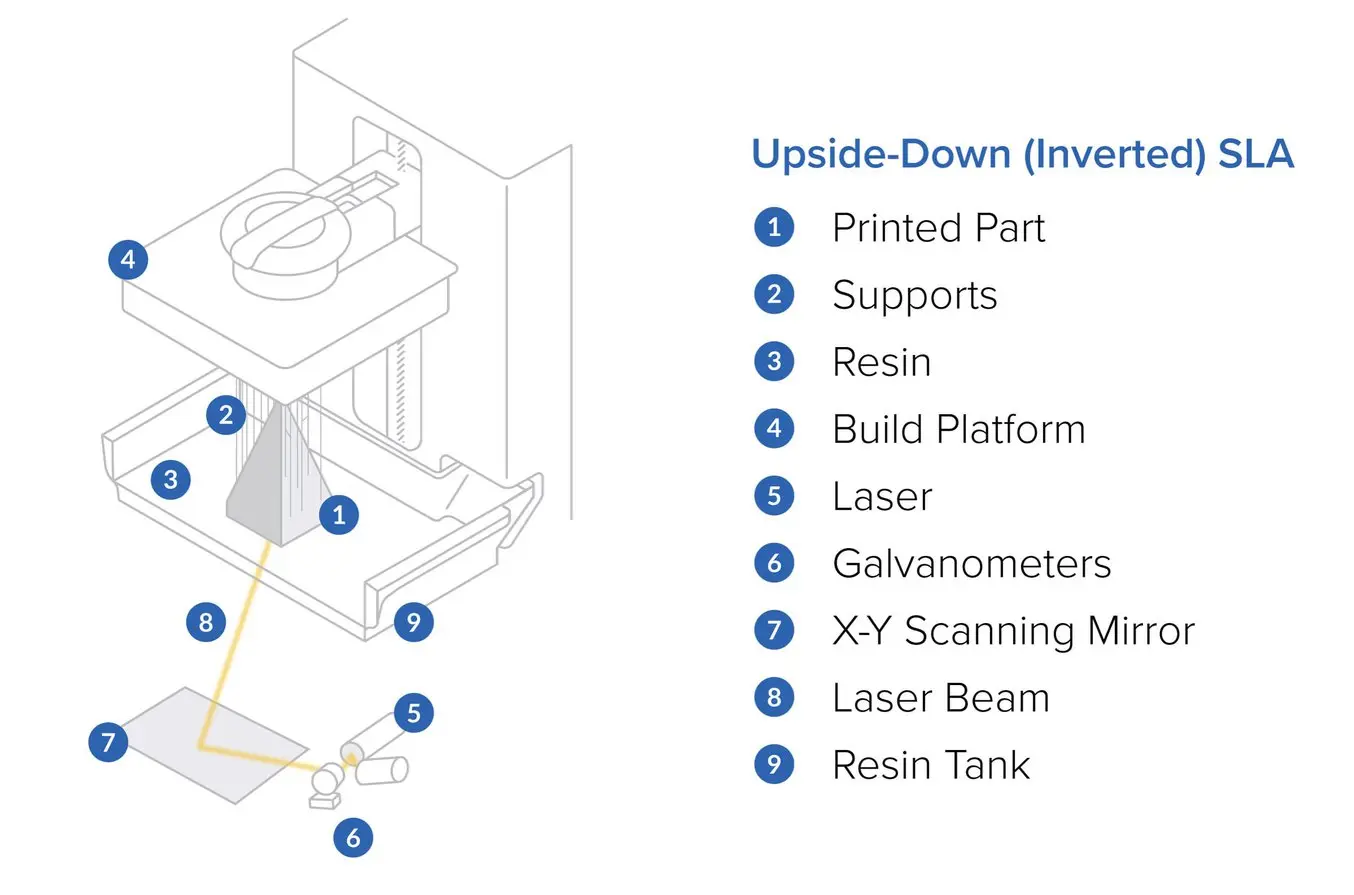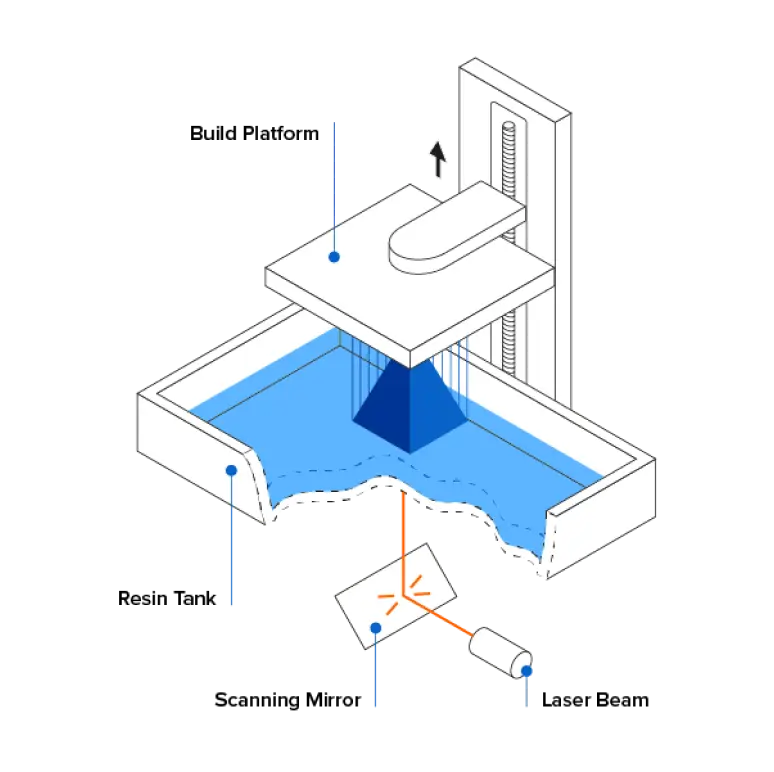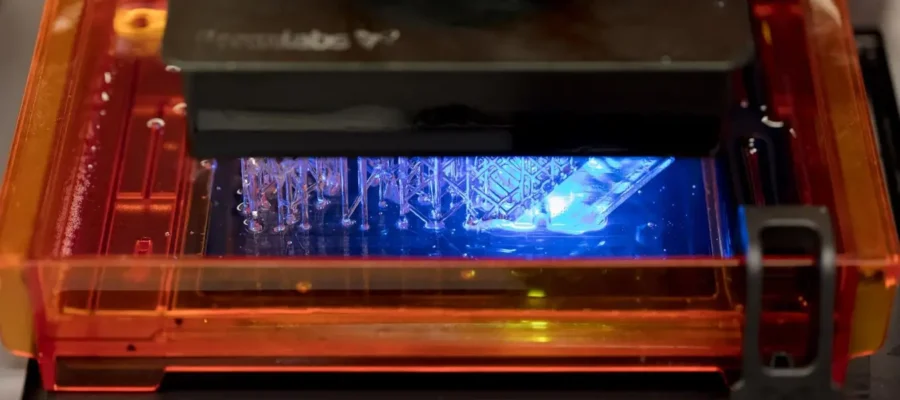Stereolithography has achieved many milestones in the world of 3D printing (additive manufacturing). It’s been almost 40 years since the issue of the first patent for the stereolithography (SLA) ‘printing’ process. That makes SLA both the first and longest-running additive manufacturing technology. SLA was also the first system to be commonly put to use for rapid prototyping, one of the primary uses of 3D printing even today. Throughout its history, it has gone through different iterations and improvements, becoming smaller, more accessible, and offering an expanded material scope enabling more applications and use cases. In the case of Formlabs Desktop SLA 3D printers, a new iteration of SLA, known as Low Force Stereolithography (LFS)™ is being utilized to enhance surface quality, print accuracy and speed.
SLA vs Other 3D Printing Technologies
Using the term ‘printing process’ in relation to SLA is a bit of a misnomer. Printing generally involves placing a print medium onto a base to reproduce text, images or objects. Examples include printing ink onto paper or extruding heated plastic onto a build platform in a 3D printer.
Conversely, SLA ‘prints’ objects inside a container of photosensitive resin. The technology directs a high-power laser beam into the resin. The laser solidifies the resin, layer by layer, into the printed shape or object. The process that converts liquid resin into a solid by exposing it to light is known as photopolymerization.
When comparing the output of SLA printers to other additive manufacturing technologies, two main differences emerge.
Print Versatility
3D print material manufacturers continue to develop a wide variety of resin formulations for SLA printing. The formulations are designed to meet different optical, mechanical and thermal properties to meet the specifications of a broad range of thermoplastic parts.
Print Quality
SLA also prints to the highest resolution of all 3D printing technologies. The result is parts that are more accurate, more complex in shape, including more intricate details, and have smooth surface finishes. And they all have the same isotopic and water-tight properties that are expected from SLA parts.
Components of a Stereolithography 3D Printer
All SLA printers generally have the same four main components.
1. A holding tank containing a liquid resin photopolymer.
2. A build platform inside the tank immersed in the photosensitive liquid resin. Like many other 3D printing technologies, the platform moves up or down according to the requirements of the printing process.
3. A high-power, ultraviolet laser and a mirror to guide the laser beam.
4. Computer hardware and applications that convert CAD files into the stereolithography printing format (STL) and manages the platform, the mirror and the laser movements.

The Stereolithography 3D Printing Process
It is important to note that SLA printers generally print objects upside down. The liquid resin tank has a transparent base through which the laser beam is guided from below. Once the CAD file is ready for printing, the SLA printer goes through the following process
1. The laser/mirror combination directs the beam according to the path needed for the first cross-section layer of the object you are printing. The resin solidifies wherever the laser beam hits it.
2. The build platform, which is upside down toward the top of the resin tank, raises in preparation for the second and subsequent layers
3. The object builds layer by layer. When the print is complete, the platform raises the object entirely out of the resin so that excess resin can drain away. Any resin that isn’t solidified by the laser remains in the tank and can be used again.
4. Post-processing can include washing the object to remove excess resin and removing any support pieces. The object is then put into a UV oven for curing.

To learn more about additive manufacturing, check out our article The Benefits of Biocompatible 3D Printing for Healthcare.
